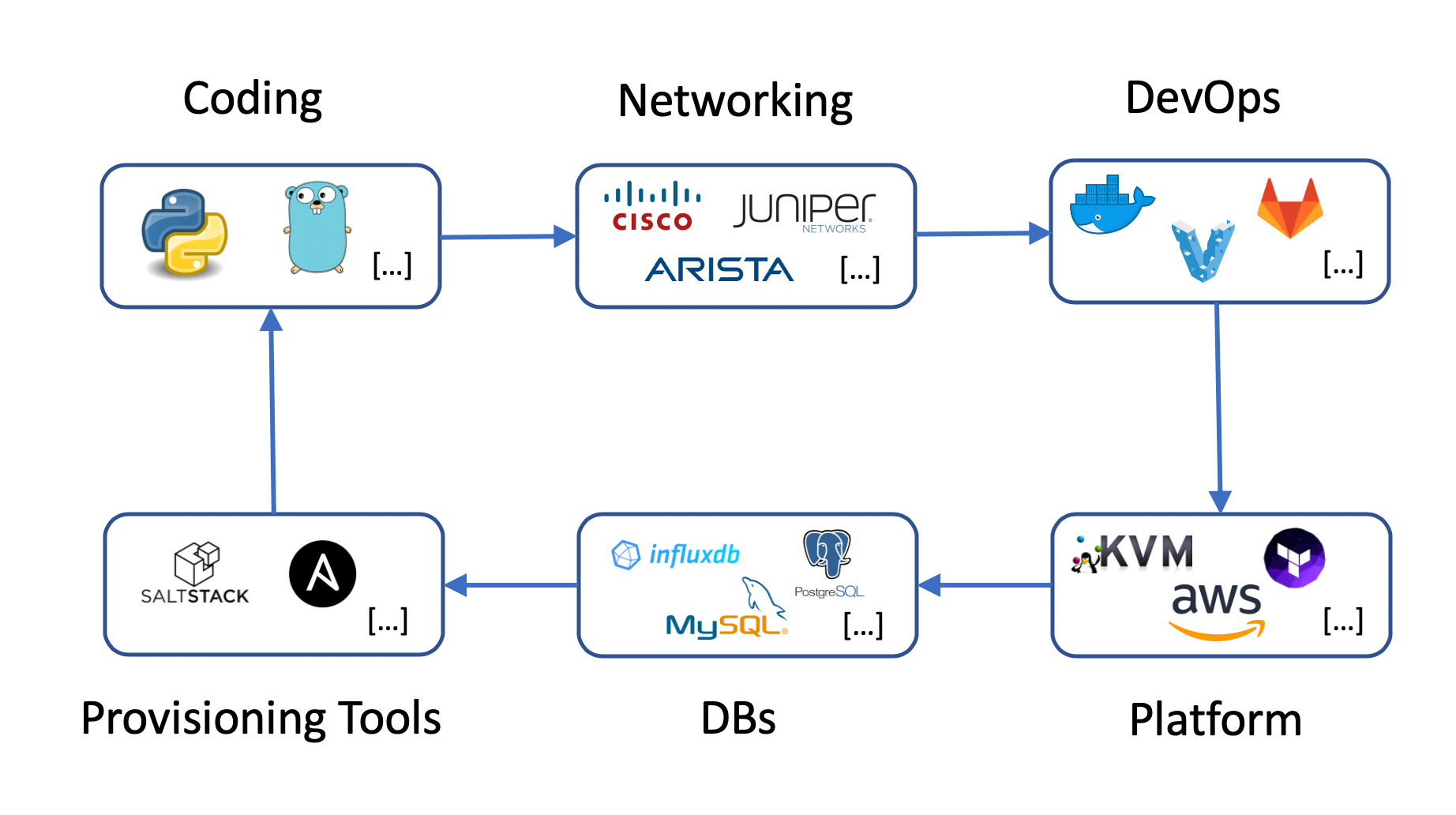The Facts About Network Automation Revealed
Table of ContentsSome Known Incorrect Statements About Network Automation The Single Strategy To Use For Network AutomationSee This Report about Network AutomationSome Known Questions About Network Automation.
Network administrators utilize PowerShell to assist manage their Parallels Remote Application Server (RAS) implementations from the command line. With PowerShell, administrators can automate setup operations, streamline cloud automation and create automatic scripts for repeated and complicated jobs within their networks. Parallels RAS PowerShell SDK can be set up as a standalone component that makes all of this possible, allowing IT to connect and handle the farm from any area.HP Network Automation software application automates the total operational lifecycle of network gadgets from provisioning to policy-based change management, compliance, and security administration. When integrated with HP Network Node Supervisor i (NNMi) software application, you get an incorporated solution that unifies network fault, availability, and efficiency with modification, setup, compliance, and automated diagnostics.
Reduce costs by automating time-consuming manual compliance and configuration tasks Pass audit and compliance requirements easily with proactive policy enforcement and audit and compliance reports Improve network security by acknowledging and repairing security vulnerabilities prior to they affect your network Increase network stability and uptime by avoiding the disparities and mis-configurations Utilize process-powered automation to provide application combinations, which provide complete IT lifecycle workflow automation.
There are tools readily available to assist you automate repeated jobs and reporting to make your staff's lives simpler and save time that could be better spent doing other things. Prior to we enter the tools and execution of network automation, let's explain what it is and how it works. Network automation uses software to automatically set up, handle, arrangement and test network devices.
A Biased View of Network Automation
Basically, it makes your life simpler and conserves money. Network automation works by utilizing tools to support networking functions like device discovery and network mapping as well as more intricate things like network setup management and virtual network provisioning. Network automation can also be utilized for: Network Virtualization Software-defined Networking Virtual Load Balancing You can automate any network resource controlled through application shows interface (API) or command-line user interface (CLI).
Script-driven automation and software-based automation. Script-driven automation uses scripting and setting languages such as Perl, Python, Tcl and Ruby. You can use script-driven automation scripts to execute jobs. It's best used for jobs that follow consistent treatments or have specified triggers. Software-based automation is likewise referred to as intelligent network automation.
You can utilize plain language policies and design templates to produce and execute jobs. If you've decided that network automation is a reliable service for your group and enterprise the next action is to create an execution plan. Creating an efficient strategy will ensure that you're picking the best type of jobs to automate and the right technique for those tasks.
Get together with your group and get their feedback on which jobs they wish to see automated. Chances are, they'll have plenty of ideas! You might likewise look at your network tools (such as network analyzers or SNMP displays) to see if any discomfort points can be recognized from them.
A Biased View of Network Automation

Concentrate on which bring the most service value and eliminate the a lot of pain for your staff. You might likewise want to focus on some simple tasks, even if they're not triggering much strain. Every automated job removes the requirement for a person to do it, bear in mind that automation likewise reduces human error.
Consider the kinds of jobs you desire to automate and pick the tool best fit for those tasks. Keep in mind that with network automation, simpleness is crucial. So, choose a tool that will be easy for your team to handle and deal with. Similar to any networking project, ensure your security bases are covered.

Hopefully, your automated jobs are working effectively and haven't triggered any interruption for users and your staff has a lighter he has a good point work, without recurring browse around this web-site and time-consuming jobs. But there is more for you to consider. It is necessary to monitor and frequently test your automation to make sure that they are running as expected (Network Automation).
Network Automation - The Facts
Once you've done your preliminary of automation, consider putting together a list of additional jobs to automate in the future. You have actually already purchased the tools, so you need to look to maximize your financial investment. You most likely have a list of tasks that didn't satisfy the requirements for the very first round of automation, so that can get you began.
With all of the activity going on in the networking market today, and all of the new terminology (in addition to old re-invented terms), it's quite easy to get messages blended. After all, there's no central dictionary for all of this things. I 'd like to deal with something that has actually badgered me for a while.
This almost totally misses the point, in my opinion. Network Automation. Network automation ought to actually be considered a prerequisite for what we'll likely be doing on our networks in 10 years; call it SDN if you want. My reasoning involved with coming to this visit this site conclusion is practically 100% about the people included.
In my experience the main point that's missing out on from 90% of business networks today is that networking groups have actually not effectively specified their workflows, and/or have actually not formalized a service catalog to other parts of business. As a result, everything is fire-fighting, or one-off requests. Tracking changes historically, and pinning them to company processes is completely impossible (if it's even tried), and garbage collection does not occur.